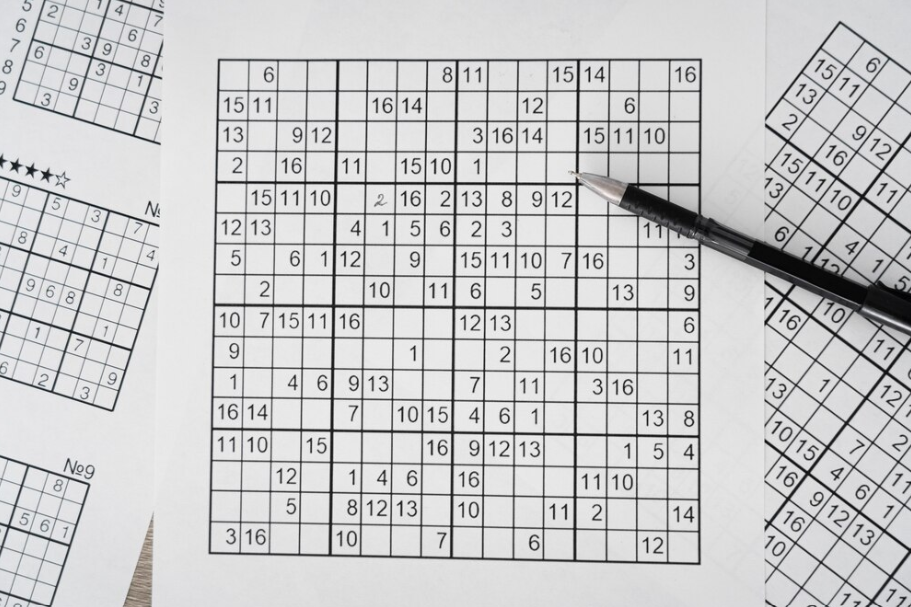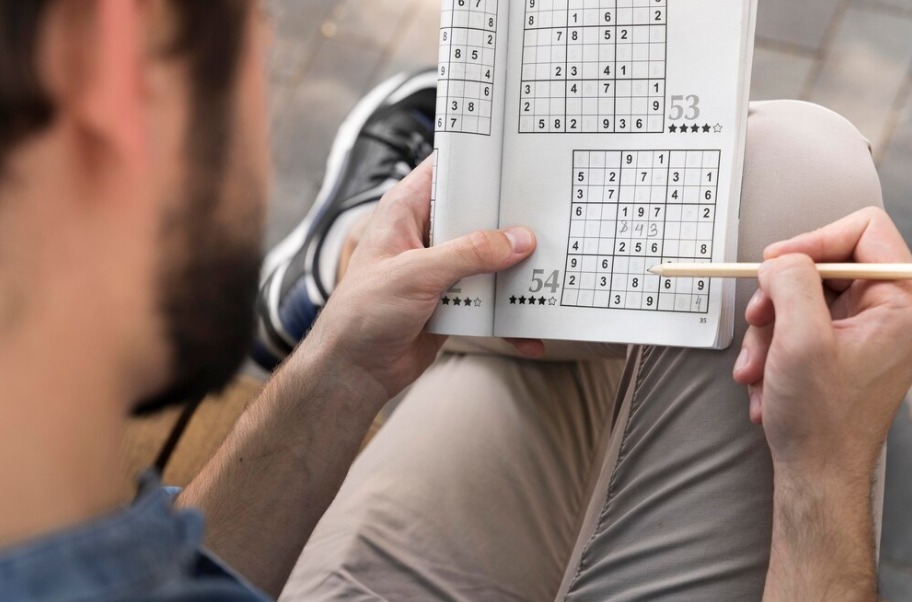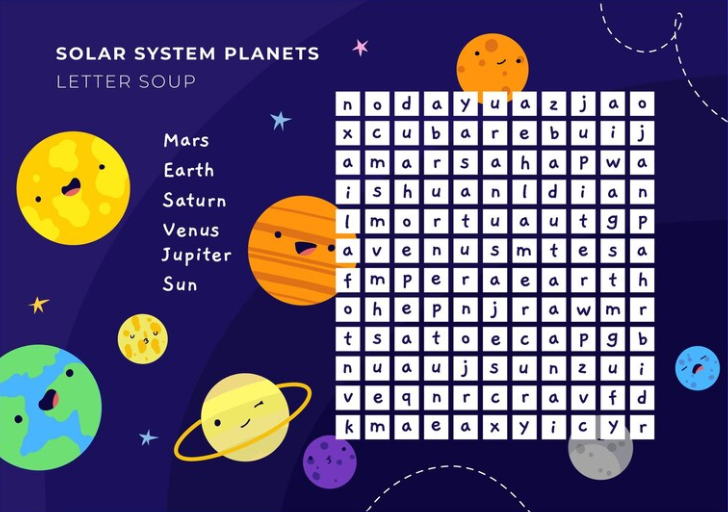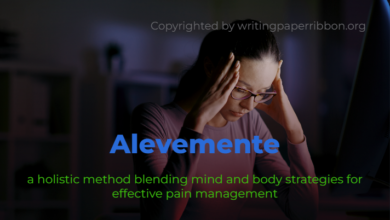Sector NYT Crossword Puzzles: Insider Tips and Strategies
Introduction to Crossword Puzzles
Crossword puzzles have been a beloved pastime for over a century. The first known crossword puzzle appeared in the New York World on December 21, 1913, created by journalist Arthur Wynne. This puzzle, which Wynne called a “word-cross,” quickly gained popularity, leading to the creation of more puzzles in newspapers across the United States.

Over the decades, crossword puzzles evolved in complexity and variety. Early puzzles were simple and straightforward, but as their popularity grew, so did the intricacy of the clues and the grid patterns. Today, sector NYT Crossword are a staple in newspapers, magazines, and online platforms worldwide.
Table of Contents
The Popularity of Crossword Puzzles
The appeal of crossword puzzles lies in their ability to challenge the mind while providing entertainment. Solving a sector NYT Crossword requires a combination of vocabulary, general knowledge, and problem-solving skills. This combination makes crosswords a favorite activity for people of all ages.
Sector NYT Crossword puzzles have a universal appeal because they can be enjoyed at one’s own pace, making them perfect for leisure time or daily routines. Whether it’s a quick puzzle in a daily newspaper or a more challenging weekend edition, crosswords offer a satisfying mental exercise.
The Role of Crossword Puzzles in Modern Culture
Crossword puzzles have cemented their place in modern culture. They are more than just a pastime; they are a cultural phenomenon. From the creation of crossword-themed books and merchandise to their inclusion in popular television shows and movies, crosswords have become a part of our daily lives.
The New York Times Crossword, in particular, holds a special place in this cultural landscape. Known for its challenging clues and clever wordplay, the NYT Crossword is considered the gold standard of crossword puzzles, attracting a dedicated following of solvers worldwide.
The New York Times Crossword
The New York Times published its first crossword puzzle on February 15, 1942. At that time, the crossword was a relatively new addition to the newspaper, but it quickly became a reader favorite. Margaret Farrar, the first crossword editor for the Times, played a significant role in shaping the puzzle’s format and standards, establishing a legacy of quality and innovation.
Under subsequent editors, including Eugene T. Maleska and Will Shortz, the sector NYT Crossword continued to evolve. Today, it is renowned for its wit, creativity, and the ability to reflect contemporary culture through its clues and answers.
The Evolution of the NYT Crossword

The sector NYT Crossword has undergone significant changes since its inception. Initially, the puzzles were straightforward, but over the years, they have become more sophisticated and diverse. The sector NYT Crossword now feature a variety of themes, including rebus puzzles, where multiple letters are placed in a single square, and cryptic crosswords, which use intricate wordplay and puzzles within puzzles.
One of the most notable changes has been the inclusion of contemporary language and pop culture references. This evolution has helped keep the puzzle relevant and engaging for newer generations of solvers.
Why the NYT Crossword is Iconic
The NYT Crossword’s reputation for excellence is well-deserved. It is known for its high-quality construction, clever clues, and a balance of difficulty levels throughout the week. Monday puzzles are typically the easiest, with difficulty increasing as the week progresses, culminating in the notoriously challenging Saturday puzzle. The Sunday puzzle i.e. Sector NYT Crossword, while not the hardest, is the largest and often features creative and thematic elements.
The NYT Crossword is not just a puzzle; it is a tradition. Solvers eagerly await each day’s puzzle, and many develop rituals around their solving habits. The crossword has also become a communal activity, with friends and family often collaborating to solve particularly tough clues.
Understanding Crossword Puzzle Terminology
Crossword puzzles come with their own set of jargon that can be confusing to beginners. Here are some common terms used in the world of crosswords:
- Across: Clues that run horizontally in the puzzle grid.
- Down: Clues that run vertically in the puzzle grid.
- Grid: The structure of the puzzle, consisting of squares where answers are filled in.
- Clue: A hint or definition that guides the solver to the answer.
- Fill: The answers to the clues, written in the grid.
- Theme: A unifying idea or pattern that connects certain answers in the puzzle.
- Rebus: A square that contains more than one letter.
- Nina: A hidden message or word embedded in the puzzle.
Clue Types and Their Characteristics
Crossword clues can vary widely in their structure and difficulty. Here are some common types of clues:
- Direct Clues: Straightforward hints that lead directly to the answer (e.g., “Capital of France” for PARIS).
- Cryptic Clues: Puzzles within the puzzle that involve wordplay, anagrams, and other linguistic tricks.
- Fill-in-the-Blank Clues: Clues where part of a familiar phrase or name is missing (e.g., “Gone with the ___” for WIND).
- Pun Clues: Play on words that require a creative interpretation (e.g., “Spy’s favorite type of shoes?” for SNEAKERS).
The Significance of “Sector” in Crossword Puzzles
In crossword puzzles, the term “sector” can refer to a specific area or region within the puzzle grid. It can also be part of a thematic element where certain clues or answers relate to different sectors or segments of a larger concept. Understanding how sectors are used in crossword puzzles can provide valuable insight into solving them.
The Concept of “Sector” in Crossword Puzzles

A “sector” in crossword puzzles typically refers to a distinct area or section of the puzzle grid that is either part of the theme or has a specific characteristic. This concept can be used in various ways to enhance the puzzle’s complexity and enjoyment i.e. Sector NYT Crossword.
How Sectors are Used in NYT Crosswords
In the NYT Crossword, sectors can be used in several creative ways. For example, a puzzle might divide the grid into sectors that each represent different topics, themes, or patterns. Alternatively, sectors might contain rebus squares, where solvers must think outside the box to fill in multiple letters in a single square.
Sectors can also be used to hide messages or create intricate designs that only become apparent once the puzzle is fully solved. This adds an extra layer of challenge and satisfaction for solvers.
Famous Examples of Sector Clues in NYT Crosswords
There have been many memorable sector-themed puzzles in the NYT Crossword’s history. One famous example is the “Crossword in a Crossword” puzzle, where smaller crossword grids were embedded within the larger grid, creating sectors that solvers had to complete individually before solving the entire puzzle.
Another notable example is the “Four Corners” puzzle, where each corner of the grid represented a different sector with its own theme, such as famous books, historical events, or pop culture references. These sector-based puzzles showcase the creativity and ingenuity of sector NYT Crossword constructors.
Solving the Sector NYT Crossword

Solving clues in the sector NYT Crossword requires a combination of general crossword-solving skills and specific strategies tailored to sectors. Here are some tips to help:
- Identify the Theme: Understanding the overall theme of the puzzle can provide context for sector clues.
- Look for Patterns: Pay attention to repeating patterns or structures in the grid that might indicate sectors.
- Use Cross-Referencing: Clues in one sector might relate to or reference clues in another sector, so keep an eye out for connections.
Strategies for Approaching Difficult Sectors
When faced with a challenging sector, it’s important to stay patient and methodical. Here are some strategies to help:
- Break It Down: Focus on solving one part of the sector at a time, rather than trying to tackle the entire sector at once.
- Use Fill-in-the-Blanks: Identify any fill-in-the-blank clues that might be easier to solve and use them to gain a foothold in the sector.
- Revisit Unsolved Clues: If you get stuck, move on to other clues and return to the difficult sector later with a fresh perspective.
Common Pitfalls and How to Avoid Them
Solving sector clues can be tricky, and there are common pitfalls to watch out for:
- Overlooking the Theme: Ignoring the puzzle’s theme can make sector clues harder to solve.
- Forgetting Rebus Squares: Failing to consider rebus squares can lead to incorrect answers.
- Misinterpreting Clues: Overthinking or misinterpreting clues can lead to frustration. Take a step back and consider simpler interpretations.
The Art of Constructing Crosswords
Creating a crossword puzzle is a meticulous process that involves several stages:
- Theme Development: The constructor decides on a theme for the puzzle, which guides the selection of clues and answers.
- Grid Construction: The constructor designs the puzzle grid, ensuring that it adheres to standard crossword conventions and accommodates the theme.
- Clue Writing: The constructor writes clues for each answer, balancing difficulty and creativity.
- Testing and Editing: The puzzle is tested by other solvers and edited for accuracy, clarity, and quality.
The Role of Sectors in Puzzle Construction
Sectors play an important role in puzzle construction, especially for thematic puzzles. They can add layers of complexity and intrigue, making the puzzle more engaging for solvers. Constructors use sectors to create unique challenges and enhance the overall solving experience.
Insights from Notable NYT Crossword Constructors
Notable NYT Crossword constructors, such as Will Shortz and Patrick Berry, have shared valuable insights into their craft. They emphasize the importance of creativity, precision, and an understanding of solver psychology. These constructors often draw inspiration from various sources, including literature, history, and current events, to create puzzles that are both challenging and entertaining.
Sector NYT Crossword and Cognitive Benefits

Solving crossword puzzles, including sector NYT Crossword, offers numerous cognitive benefits. These puzzles engage the brain in various ways, promoting mental agility and overall cognitive health. Some of the key benefits include:
- Improved Vocabulary: Regularly solving crosswords helps expand vocabulary by exposing solvers to new words and phrases.
- Enhanced Memory: Remembering clues and answers exercises memory and recall abilities.
- Better Problem-Solving Skills: Crosswords require logical thinking and problem-solving, which can improve cognitive function.
How Sector Clues Enhance Brain Function
Sector clues add an extra layer of complexity to crosswords, further enhancing their cognitive benefits. Solving sector clues often involves recognizing patterns, making connections between different parts of the puzzle, and thinking creatively. These activities stimulate different areas of the brain, promoting overall mental health and cognitive resilience.
The Educational Value of Sector NYT Crosswords
Sector NYT Crossword can also have significant educational value. They often incorporate a wide range of topics, from history and literature to science and pop culture. This diversity exposes solvers to new information and encourages lifelong learning. Additionally, the challenge of sector clues can improve critical thinking and analytical skills, making them a valuable tool for educational settings.
Popular Sector NYT Crossword Puzzles
Throughout its history, the NYT Crossword has featured numerous memorable sector puzzles that have captivated solvers. Some notable examples include:
- The “Magic Square” Puzzle: This puzzle featured sectors that formed a magic square, where the sums of numbers in each row, column, and diagonal were the same.
- The “Mirror Image” Puzzle: Sectors in this puzzle created symmetrical patterns, adding a visual element to the solving experience.
- The “Word Ladder” Puzzle: Sectors in this puzzle involved transforming one word into another through a series of intermediate steps, each forming a valid word.
Analyzing Iconic Sector Clues

Iconic sector clues often involve clever wordplay or intricate connections between different parts of the puzzle. For example, a sector clue might reference a well-known phrase or idiom, but with a twist that fits the theme of the puzzle. Analyzing these clues can provide insight into the constructor’s creativity and the puzzle’s overall design i.e. Sector NYT Crossword.
Reader Favorites and Their Impact
Certain sector NYT Crosswords have become reader favorites, celebrated for their ingenuity and challenge. These sector NYT Crossword often leave a lasting impact on solvers, becoming the subject of discussions in crossword communities and inspiring future constructors. Reader favorites highlight the enduring appeal of sector crosswords and their ability to engage and entertain.
The Community Around NYT Crosswords
The NYT Crossword community is vibrant and diverse, comprising solvers of all ages and backgrounds. This community is united by a shared passion for crosswords and a love of the challenge they present. Solvers often connect through various platforms, sharing tips, discussing puzzles, and celebrating achievements.
Online Platforms and Discussion Forums
Online platforms and discussion forums play a crucial role in the NYT Crossword community. Websites like Rex Parker Does the sector NYT Crossword and the Crossword Fiend provide spaces for solvers to discuss puzzles, share solving strategies, and offer insights. These forums foster a sense of camaraderie and support among solvers.
The Role of Social Media in the Crossword Community
Social media has also become an important tool for the crossword community. Platforms like Twitter, Instagram, and Facebook allow solvers to connect with each other, share their solving experiences, and engage with crossword constructors. Hashtags like #NYTCrossword and #CrosswordPuzzles help solvers find and join conversations, further enhancing the sense of community.
Future of the Sector NYT Crossword

The world of crossword puzzles is constantly evolving, with new innovations continually enhancing the solving experience. Digital platforms have introduced interactive elements, such as animations and sound effects, while mobile apps make crosswords more accessible than ever.
The Future of Sector Clues
The future of sector clues looks promising, with constructors exploring new ways to incorporate them into puzzles. Advances in technology and puzzle design are likely to result in even more creative and challenging sector clues. As solvers’ expectations and preferences evolve, sector clues will continue to adapt, ensuring they remain an integral part of the crossword experience.
Predicting Trends in Crossword Puzzle Design
Predicting trends in sector NYT Crossword design involves looking at current innovations and anticipating future developments. Some potential trends include:
- Increased Interactivity: More puzzles might feature interactive elements, such as clickable sectors that reveal additional clues or hints.
- Greater Inclusivity: Constructors may strive to include more diverse references and cultural themes, reflecting a broader range of experiences.
- Enhanced Collaboration: Collaborative puzzles, where solvers work together to complete sectors, could become more popular, fostering a sense of community and teamwork.
Conclusion
The sector NYT Crossword is a fascinating and challenging aspect of crossword puzzles, offering unique clues and intricate designs that enhance the solving experience. From its historical roots to its cognitive benefits, sector crosswords provide a rich and rewarding pastime for solvers of all levels.
Encouraging New Solvers to Embrace the Challenge
For those new to crosswords, sector NYT Crosswords offer an exciting and rewarding challenge. With patience, practice, and a willingness to learn, anyone can develop the skills needed to tackle these puzzles. The community of solvers is welcoming and supportive, ready to help newcomers embrace the joy of crossword puzzles.
FAQs
What is a sector in a NYT crossword puzzle?
In a NYT crossword puzzle, a sector refers to a distinct area or section of the puzzle grid. These sectors are often used to incorporate thematic elements or increase the puzzle’s complexity, making it more engaging and challenging for solvers.
How do I solve sector clues in the NYT Crossword?
Solving sector clues in the NYT Crossword involves first identifying the puzzle’s theme and looking for patterns within the grid. Cross-referencing related clues can also be helpful. Additionally, considering the possibility of rebus squares, where multiple letters fit into a single square, can aid in solving. A methodical approach and patience are essential for tackling difficult sector clues.
Why is the NYT Crossword considered iconic?
The NYT Crossword is considered iconic because of its high-quality construction, clever and often witty clues, and a balanced difficulty level throughout the week. Each day’s puzzle varies in difficulty, with Monday being the easiest and Saturday the most challenging. This balance, along with its reflection of contemporary culture, makes the NYT Crossword a beloved tradition among solvers.
What are some famous sector NYT crossword puzzles?
Some famous sector NYT Crossword puzzles include the “Crossword in a Crossword” puzzle, which features smaller crossword grids embedded within the larger grid, and the “Four Corners” puzzle, where each corner of the grid represents a different sector with its own theme, such as famous books or historical events. These puzzles are celebrated for their creativity and unique challenges.
What are the cognitive benefits of solving crossword puzzles?
Solving crossword puzzles, including sector-based ones, offers numerous cognitive benefits. Regularly engaging in crossword puzzles can improve vocabulary, enhance memory, and strengthen problem-solving skills. Sector clues, which often require recognizing patterns and making connections, provide additional mental stimulation and promote overall cognitive health.
How has the NYT Crossword evolved over time?
The NYT Crossword has evolved significantly since its inception. Originally straightforward, the puzzles have become more sophisticated and diverse, now including various themes, rebus squares, and contemporary language and references. This evolution keeps the puzzles relevant and engaging for solvers of all ages.
What are common terms used in crossword puzzles?
Common terms in crossword puzzles include “Across” for clues that run horizontally, “Down” for those that run vertically, and “Grid” for the puzzle’s structure. “Clues” are the hints that guide solvers to the answers, referred to as “Fill.” “Theme” denotes a unifying idea in the puzzle, while “Rebus” indicates a square containing more than one letter. “Nina” refers to a hidden message or word embedded in the puzzle.
How are sectors used creatively in NYT Crossword puzzles?
In the NYT Crossword, sectors are used creatively to divide the grid into thematic areas, incorporate rebus squares, or hide messages. This innovative use of sectors adds layers of complexity and intrigue, enhancing the overall solving experience and making the puzzles more engaging.
What strategies can help with difficult sector clues?
Strategies for solving difficult sector clues include breaking the sector into manageable parts, using fill-in-the-blank clues to gain a foothold, and revisiting unsolved clues with a fresh perspective. These methods can help solvers tackle challenging sectors effectively.
How does the crossword community enhance the solving experience?
The crossword community is vibrant and supportive, offering solvers a place to connect, share tips, and discuss puzzles. Online platforms, discussion forums, and social media play crucial roles in this community, fostering a sense of camaraderie and enhancing the overall solving experience.
What innovations are shaping the future of crossword puzzles?
Innovations in crossword puzzles include increased interactivity, such as clickable sectors that reveal additional clues, and greater inclusivity with more diverse cultural references. Collaborative puzzles, where solvers work together to complete sectors, are also becoming more popular, enhancing the social aspect of crossword solving.
What are the educational benefits of sector NYT Crosswords?
Sector NYT Crosswords offer significant educational benefits by exposing solvers to a wide range of topics, from history and literature to science and pop culture. These puzzles encourage critical thinking and analytical skills, making them valuable tools for learning and intellectual growth.
If you found our content helpful don’t forget to share it on your social media: Twitter
More Articles: Home




